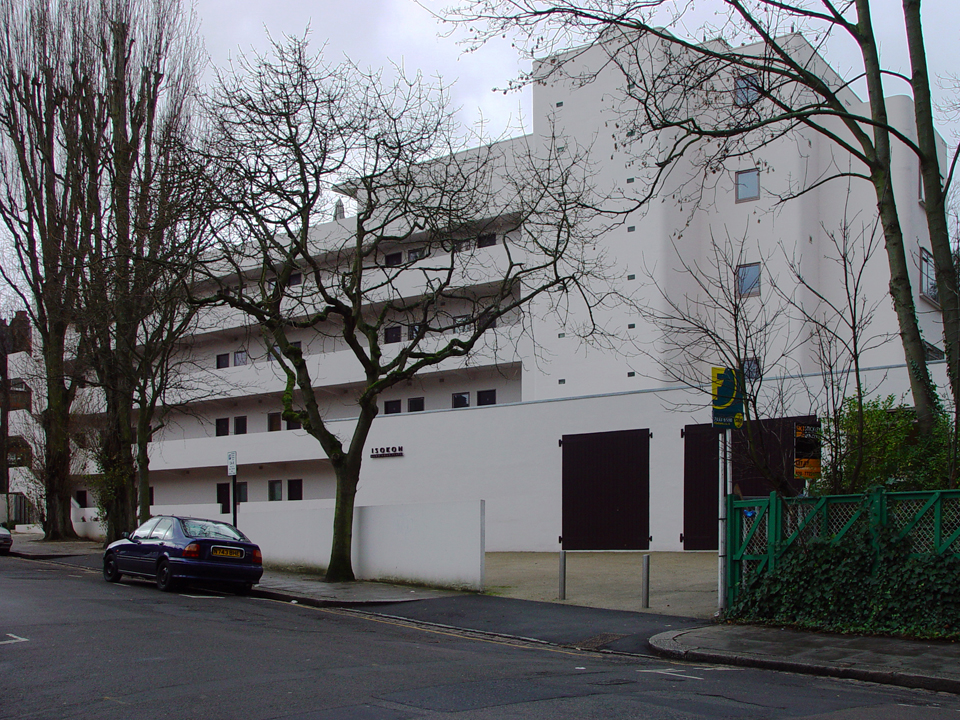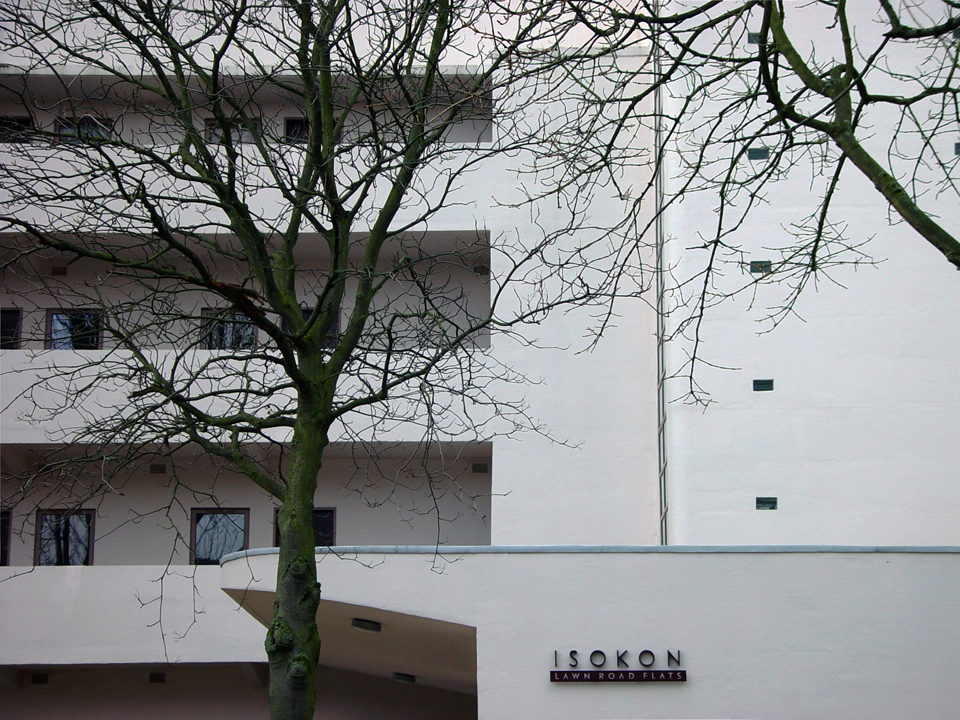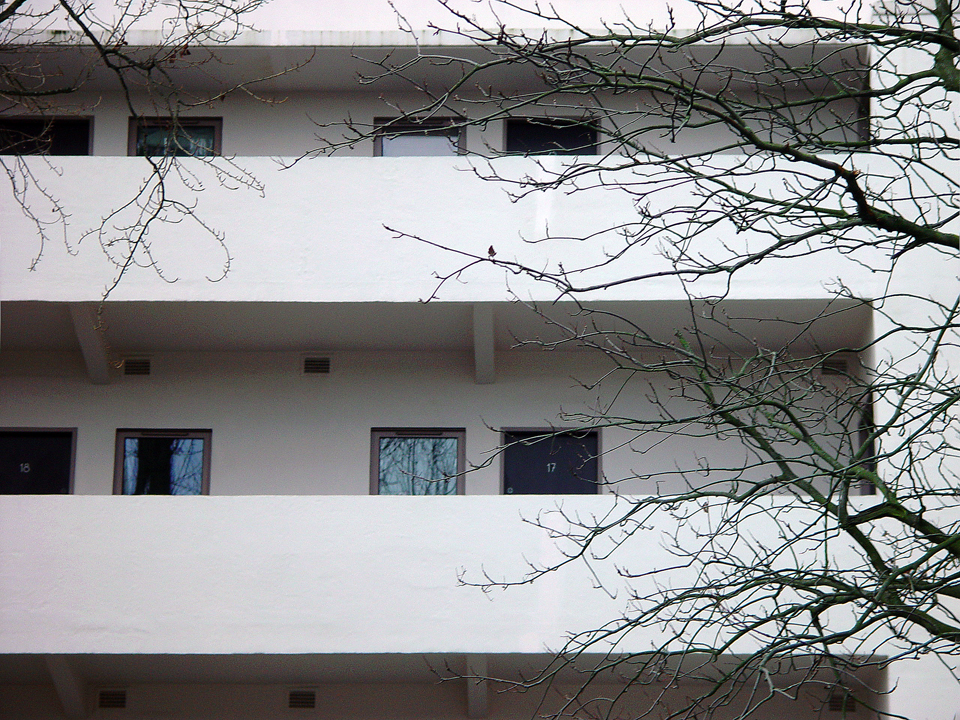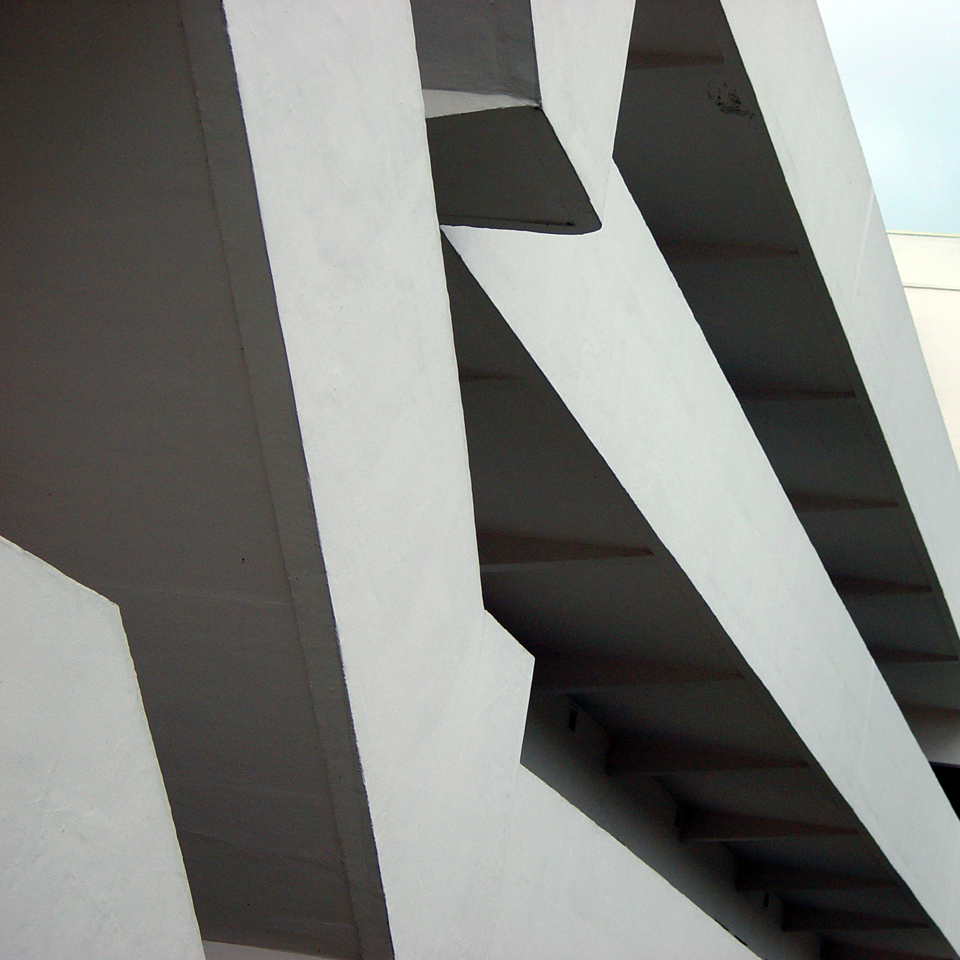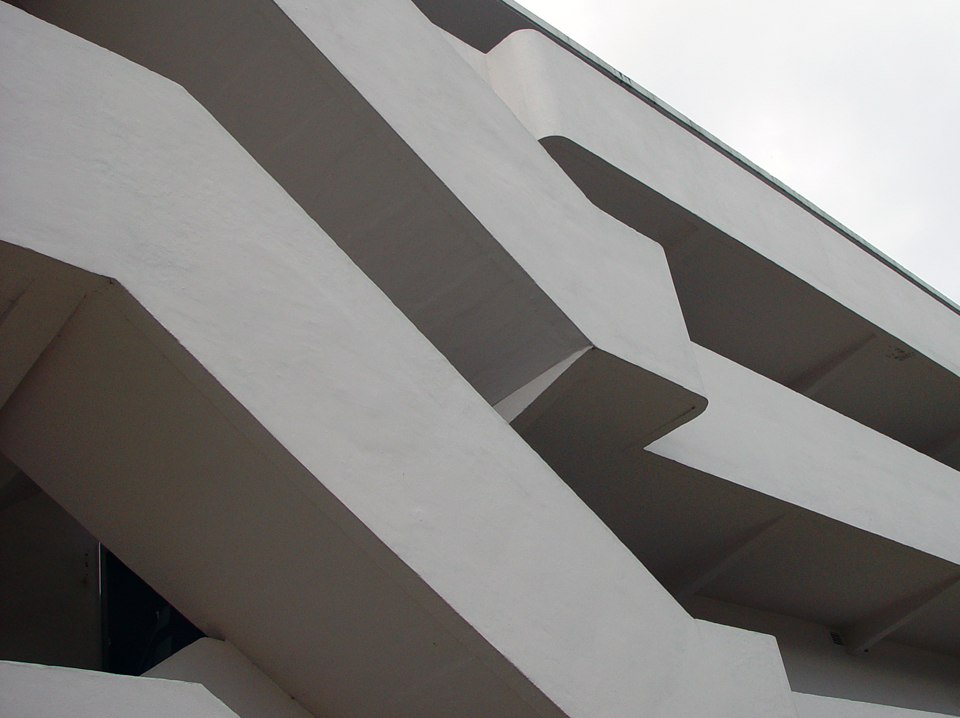Isokon
1934
One of only a handful of early modern movement buildings in the UK, Lawn Road Flats had a long period of gestation with many failed attempts at innovation aligned with CIAM principles. Trips to the Bauhuas in Dessau and the Weissenhof in Stuttgart informed Wells Coates’ ideas. With his clients Jack and Molly Pritchard, between 1929 and 1932 he considered many alternative ways of developing the Hampstead site, eventually arriving at the block of flats that stands today and carries a Grade I listing. Houses, off-site manufactured modular homes and a creche were all early suggestions before the flats, based on ideas of the minimum dwelling, became the preferred option. The orientation of the block was based on the alignment of railway tunnels beneath the site and a desire to provide a south-west aspect to each unit. Originally, 24 studio flats and 8 one bedroom flats were built. The most compact flats were intended to provide an alternative to digs for single men. As such, a communal kitchen on the ground floor meant that space could be saved in the planning of the single person flats. The kitchen was later converted to a bar, Isobar, to designs by Marcel Breuer and F.R.S. Yorke, and became a well-known hangout for the local and émigré intelligentsia of the time, including Breuer, Walter Gropius, Arthur Korn, Egon Riss and László Moholy-Nagy who were also residents. Author Agatha Christie lived there in the 1940s and architect James Stirling rented a flat in the 1960s. Isokon is thought to be the earliest housing in the UK built primarily from reinforced concrete, however, its exterior form was not viewed as particularly pioneering, whereas the planning exercise in the flats was widely admired as progressive. Plywood was used extensively in the fittings of the apartments; Jack Pritchard was the Marketing Manager for the Estonian plywood company Venesta between 1926 and 1936, while he also operated the Isokon Furniture Company, originally in partnership with Wells Coates. Their relationship was not always cordial and they fell out over the primary attribution for the design of Isokon – Pritchard at one point claimed more authorship than he ought. Between 2003 and 2004, Isokon was sensitively restored and refurbished under the direction of Avanti Architects and the studio flats are homes for key workers under a shared ownership scheme.
